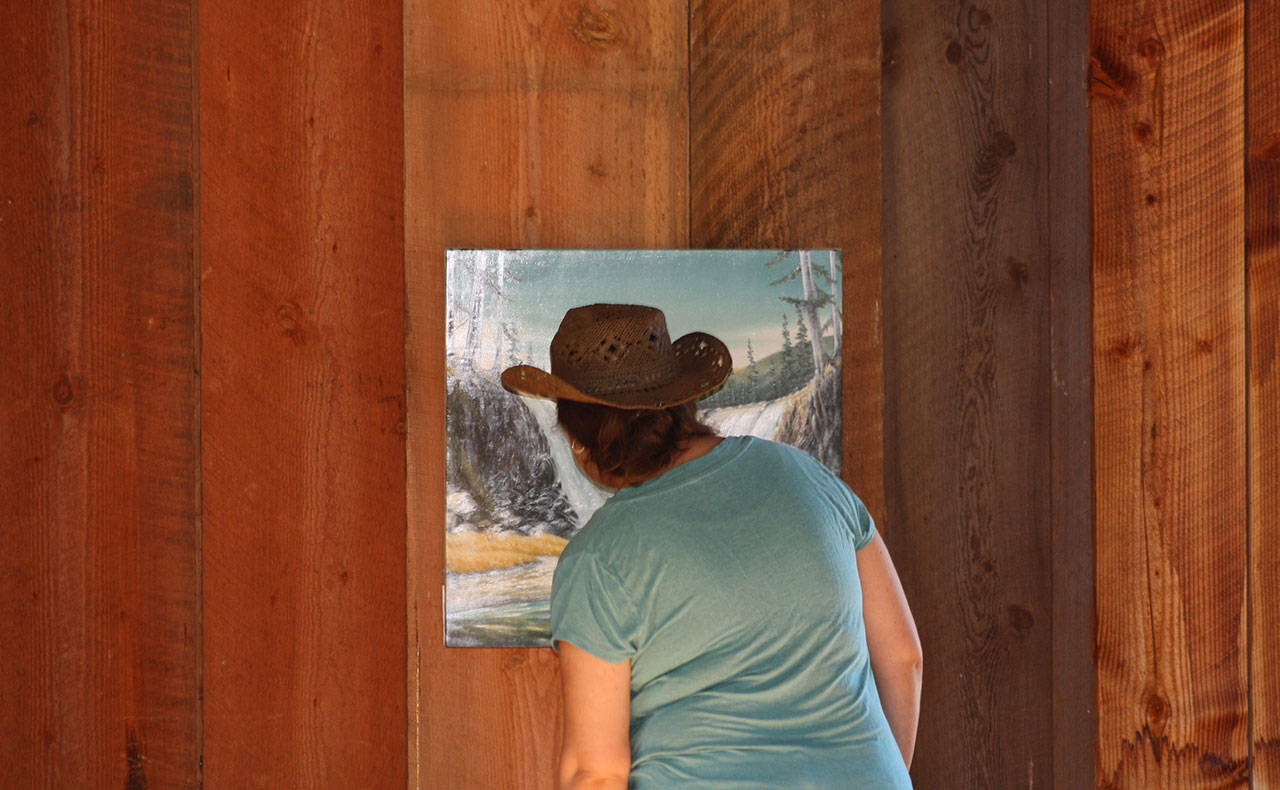Hushed breezes may roll through the pastures surrounding the park’s 19th century, wooden buildings, but inside holds photos, audio, videos, textiles and paintings of the modern age, exploring Americans’ relationships with both their past and present.
The contemporary art exhibition, “Becoming American,” tentatively runs through September at the National Historical Parks sites on San Juan Island: English Camp and American Camp.
At those park sites that mark the inaugural entrance of the San Juan Islands into America, comes a mixed-media exhibition that explores how individual artists are undergoing their own continual evolution as United States citizens. These military encampments were formed after a dispute between the two nations erupted in 1859, and the conflict was peacefully resolved years later with the official adoption of the islands into the United States.
The art pieces examine how identifiers like ancestry, race and gender affect individual artists’ personhood in the United States, versus other cultures.
Adrian Piper’s 1973 video, “The Mythic Being,” for instance, depicts the black, female, native New Yorker as a man by donning an Afro, mustache and glasses to explore, as she has stated, “What would happen if there was a being who had exactly my history, only a completely different visual appearance to the rest of society?”
To Cat Clifford, with the Seattle-based nonprofit cefalonia, which curated the exhibition, accepting America’s culture is a learned social norm, as opposed to a natural behavior.
“Being an American is something you buy into,” she said. “It’s an ongoing experience.”
American values that citizens prescribe to include self-reliance and diversity, as seen in Texas artist Ruth Robbins’ broom, weaved at a college founded by her great-great-grandfather. The letters of words from one of his poems about his newly adopted country were matched to colored bristles to create the broom, a classic American tool.
Other works, like Marie Watt’s blanket, embroidered with the words “Ephemeral Monument,” illustrate a common American theme to not prioritize historical structures compared to other nations, like in Europe.
The ubiquity of American values mirrors the exhibition, where park attendees can stumble upon the contemporary works, without realizing they’ve entered an art show, as Mike Barley did on Aug. 9.
“I think it’s a very good idea to have art displays where people come to already [for other reasons],” he said. “You don’t have to go find it.”
Americans don’t have to search for the country’s iconography either, but this exhibition asks viewers, perhaps for the first time, to examine the effects the values of those images have on themselves, both today and for the rest of their lives as Americans.
The exhibition may close earlier than Sept. 30, if the weather is too cold for the artwork. Visitors can walk inside most of the English Camp buildings to view work, but only look through structures’ windows at American Camp. The exhibition will also be featured at Seattle venues, such as Specialist in Pioneer Square. For more info, visit www.becomingamericanexhibition.com.




